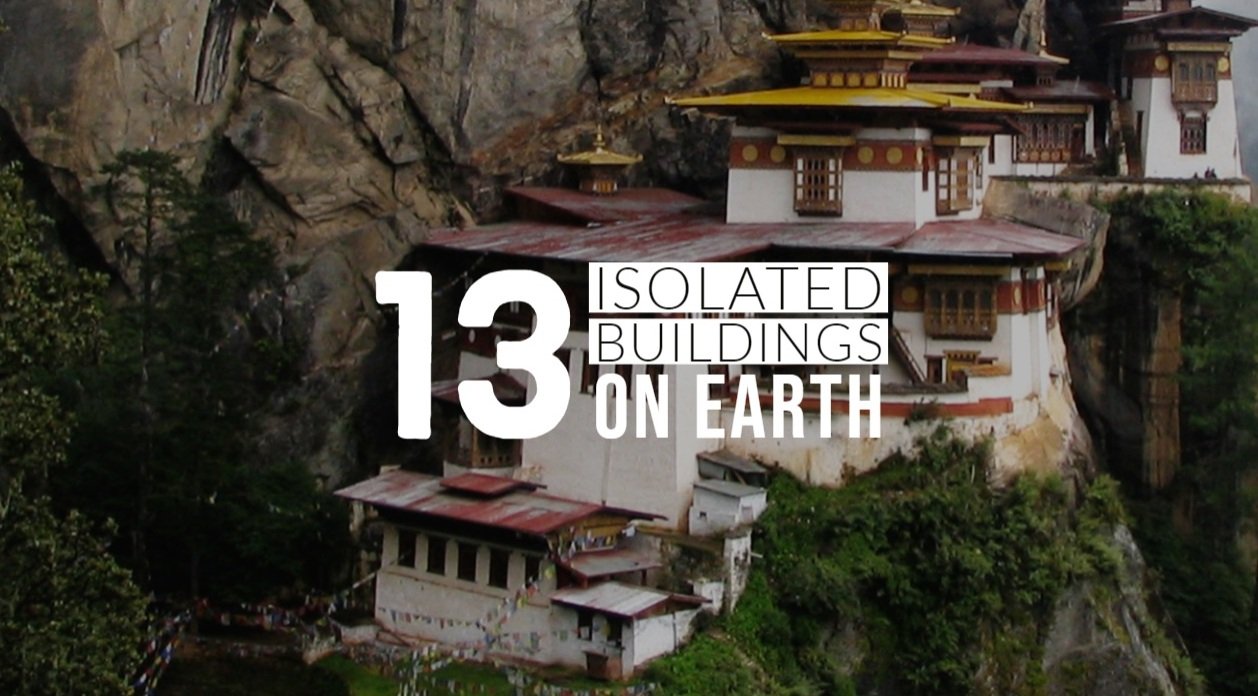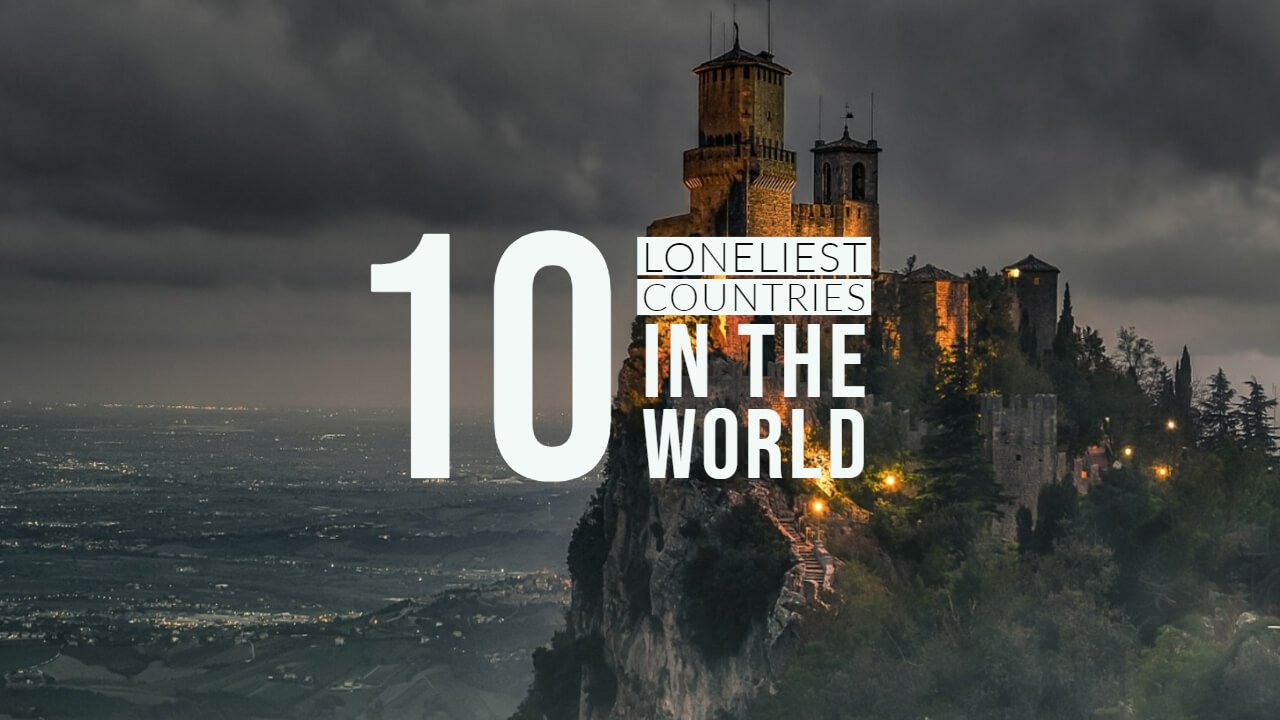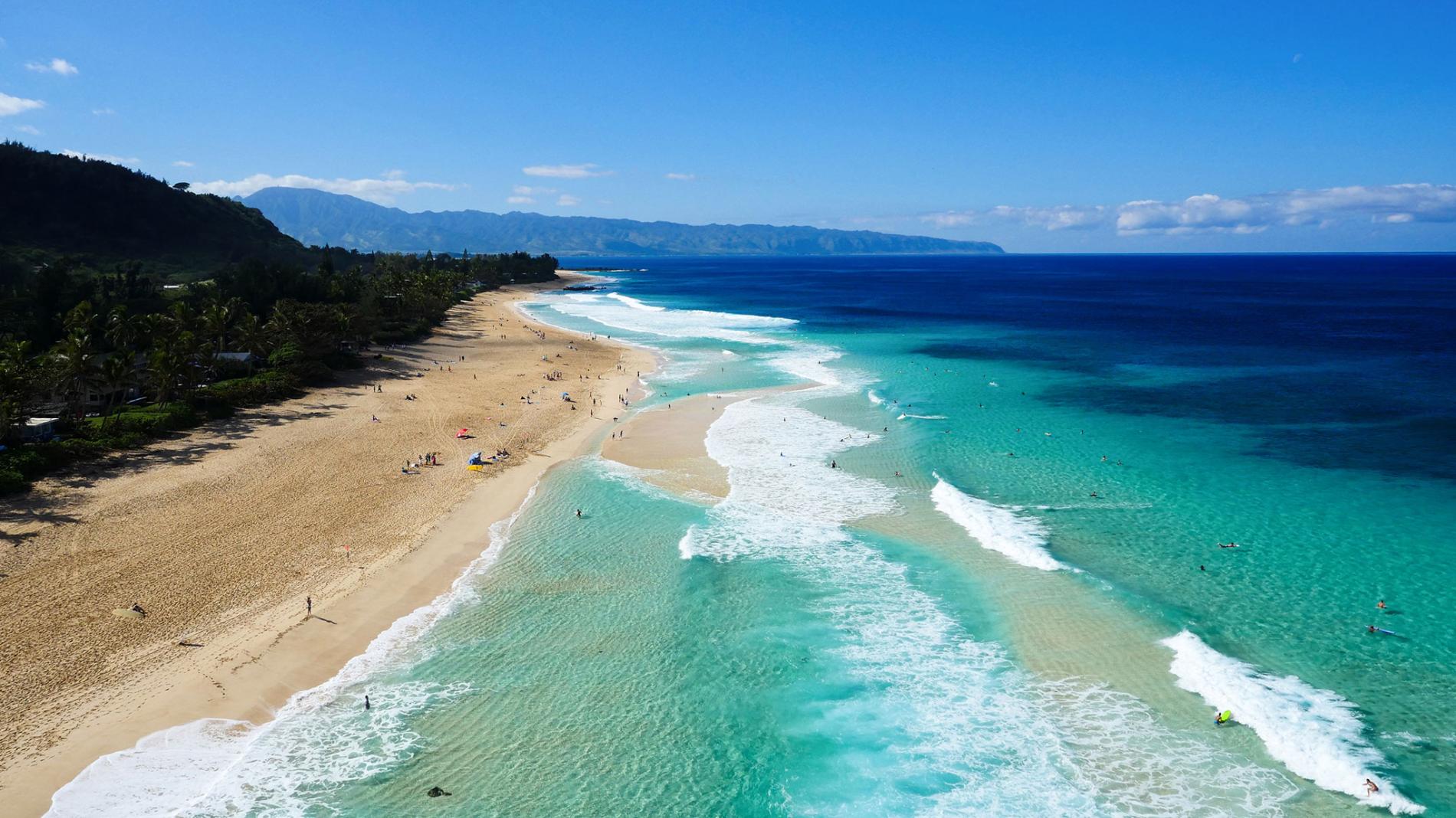Today, I will be sharing 13 Most Isolated Buildings on Earth.
1. Crystal Mill (USA)
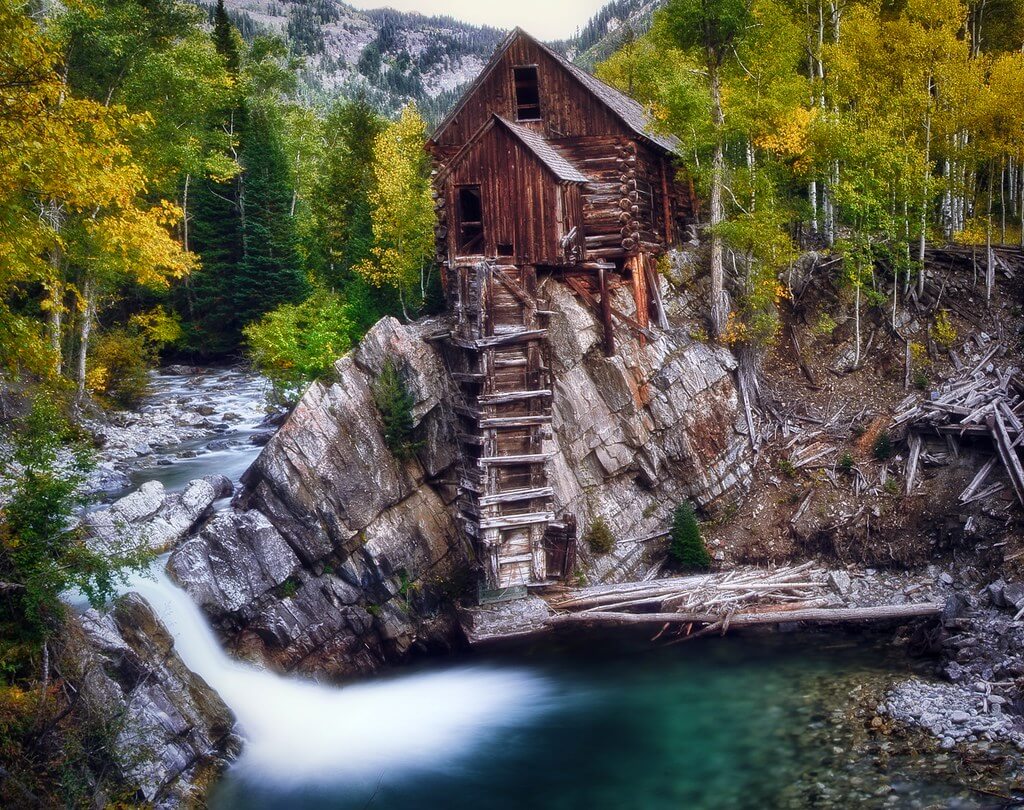
In the 19th century, many different resources were used to power tools and machinery, including compressed air.
Stations were set up so as to utilize natural resources like running streams, using turbines to drive massive air compressors.
One such powerhouse within the Colorado wild is known as Crystal Mill. Here, the station has stood since being built between 1892 and 1893, where it originally used its air compressor to power drills and other tools used in nearby mining operations.
Colorado’s Crystal River runs right past the historic building, and visitors can access the “mill” by way of 4×4 vehicles from the town of Marble.
2. Basgo Monastery (India)
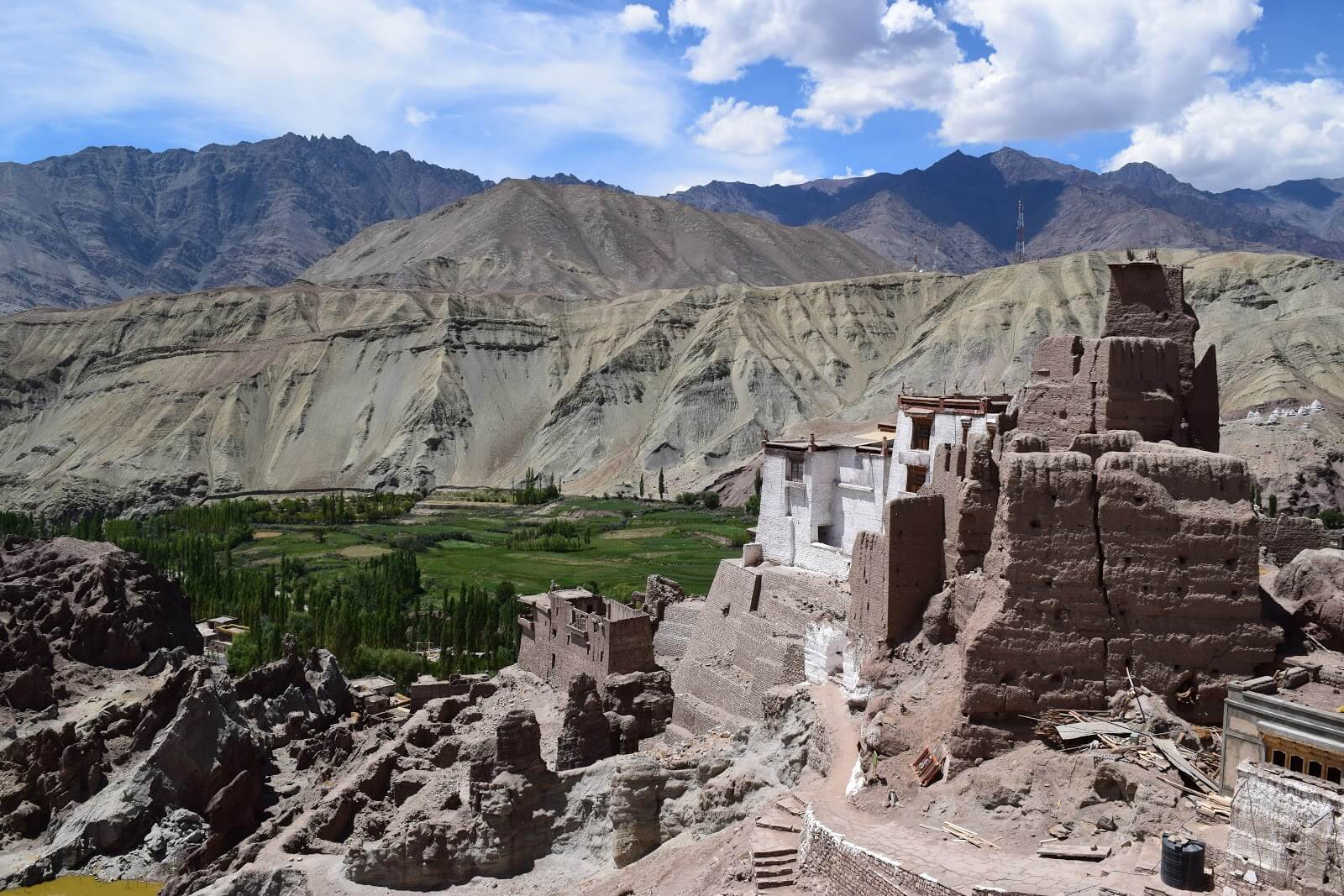
In the Leh District of the Ladakh region of Northern India, the ruins of Basgo lie in the shadow of a large buddhist monastery on a hill above town.
Composed of three separate temples, the Basgo Monastery is dedicated to the Maitreya Buddha, a figure prophesied in Buddhist literature to enlighten the future.
This is best demonstrated by a towering, nearly 46-foot statue of the deity in the largest of the three temples.
Visiting this 17th century structure isn’t particularly difficult, though the town is seemingly in the middle of nowhere, tucked between high-rising desert hills and pockets of grassy fields, around 25 miles outside the town of Leh.
3. Ellidaey Island House (Iceland)
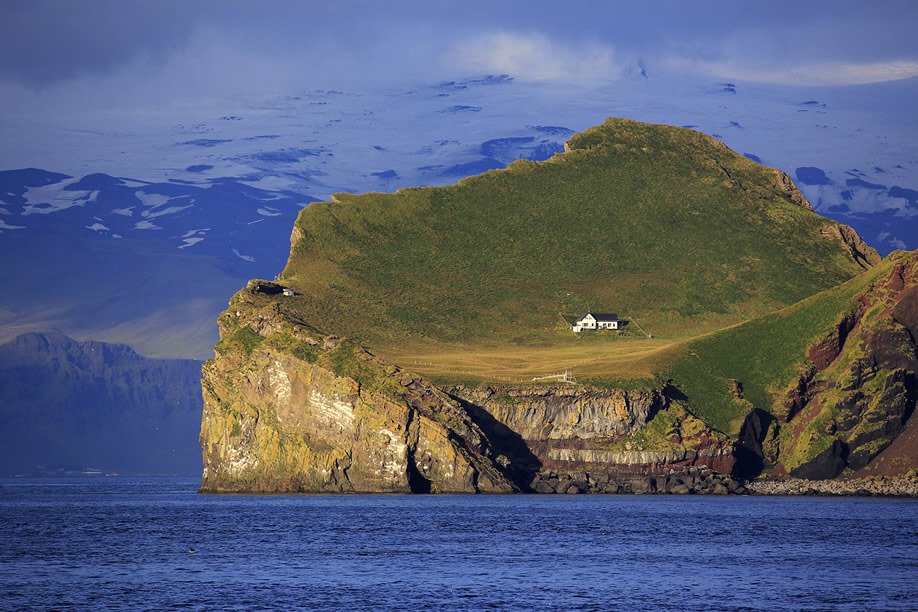
On the northeastern-most side of Iceland’s Westman Islands is the island of Ellidaey. The sloping green landmass has an area of 110 acres and is the third-largest isle in the archipelago.
Despite being once populated by families subsisting on fishing and cattle, it has a permanent population of zero residents, however, within the small valley is a single house, hidden from civilization.
This cabin is actually a hunting lodge owned and operated by the Ellidaey Hunting Association. Its main purpose is simply to provide shelter, as well as a sauna, for members that come to the island to hunt puffins, an abundant species native to Ellidaey Island.
4. Casa do Penedo (Portugal)
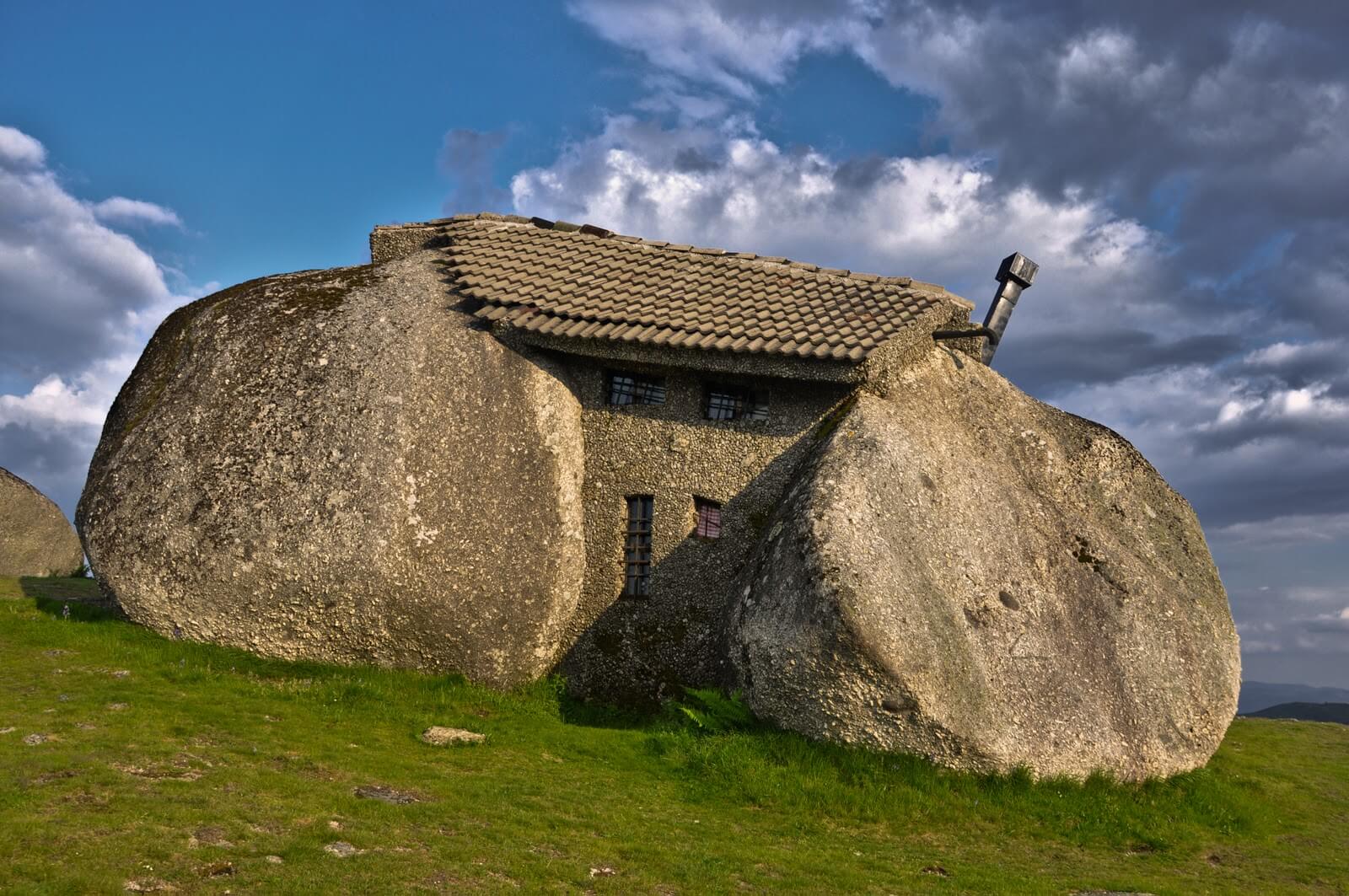
In nature, animals often make use of their surroundings to craft a shelter, whether constructing nests between branches, making a home out of a hollow tree trunk, or situating their family between sturdy boulders. The latter example isn’t reserved for the animal kingdom, though, as proven by the Portuguese Casa do Penedo.
The stone house, as Casa do Penedo literally translates to, took two years to build between 1972 and 1974. It was meant to be a simple holiday home for the owners, but over time it’s developed into a tourist destination for visitors traveling between Celorico de Basto and Fafe.
Currently, the boulder-walled building houses relics and photographs from its own history as a museum of sorts.
5. Monastery of the Holy Trinity (Greece)
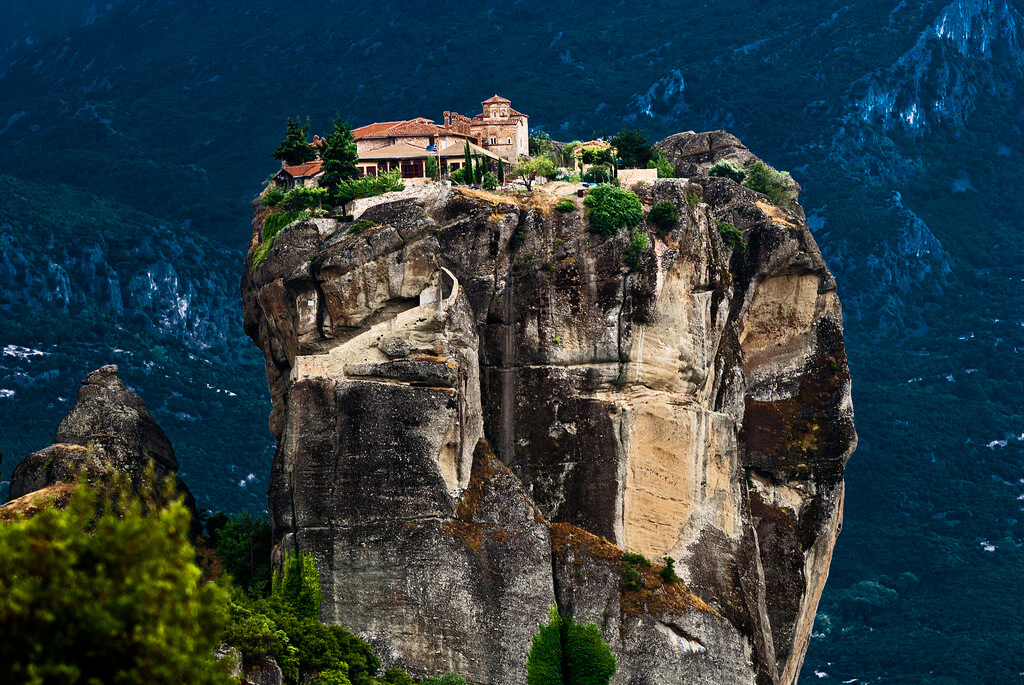
The rocky cliffs of Meteora rise 1300 feet above the ground and serve as a home to a religious structure that’s more than 500 years old.
The Monastery of the Holy Trinity was one of 24 monasteries built on top of these precipices centuries ago, but it is one of the only ones still standing today.
Historically, monks would retreat to these sanctuaries during times of political strife, but today the Holy Trinity Monastery is open to the public at large.
To reach the ancient architecture, one must travel a road from the town of Kalambaka, then navigate a series of tunnels before climbing 130 stone steps.
6. Svalbard Global Seed Vault (Norway)
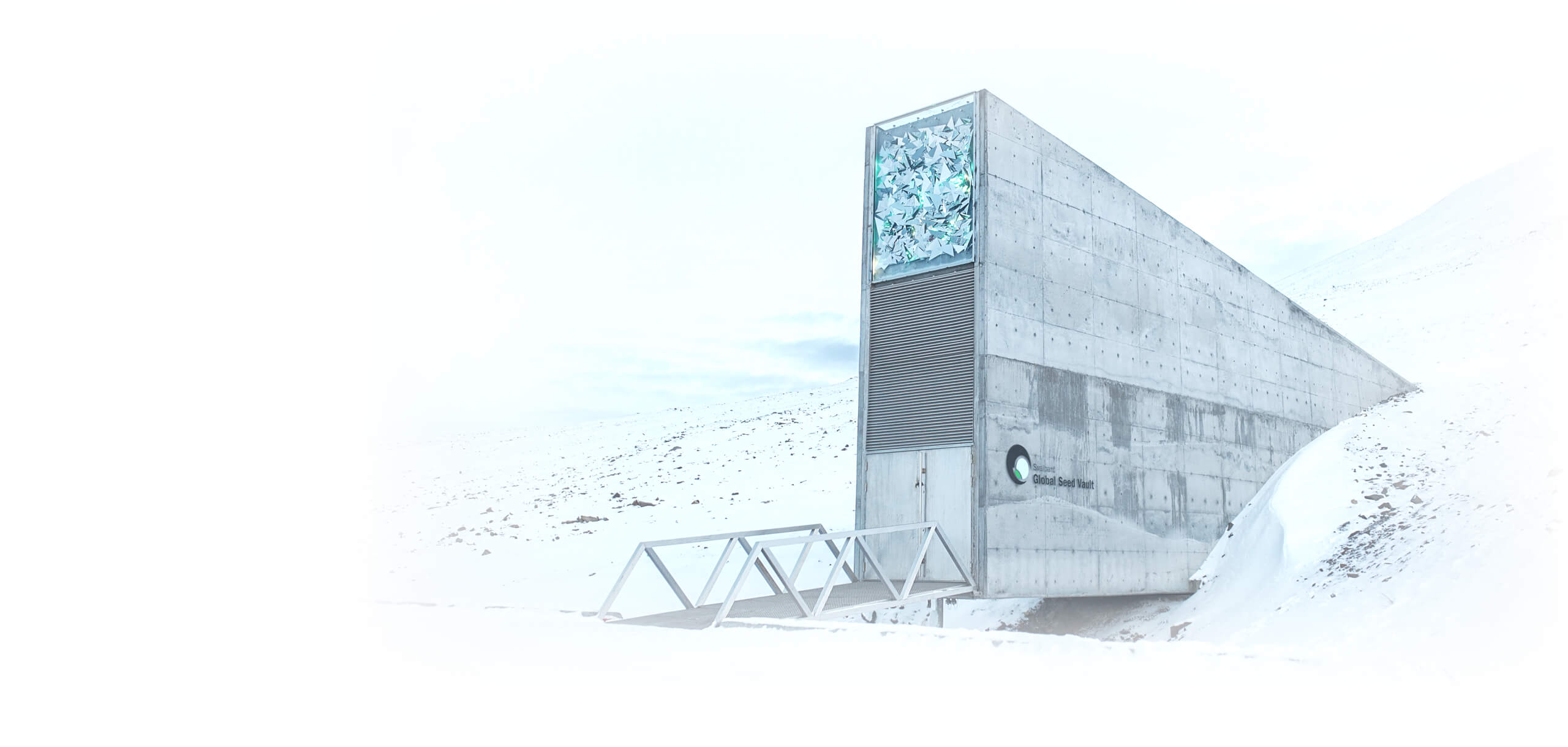
Global crises are a looming concern as climate change, technology advances, and other modern factors continue to alter our world. To protect against the potential of losing plant species, particularly certain strains that could be lost to a natural disaster or other interference, the Svalbard Global Seed Vault was established in Norway.
Hidden in the safety of the Svalbard archipelago, on the island of Spitsbergen, this building protects millions of seed samples, with the potential to hold up to 2 and a quarter billion individual seeds.
7. Wordie House (Antarctica)
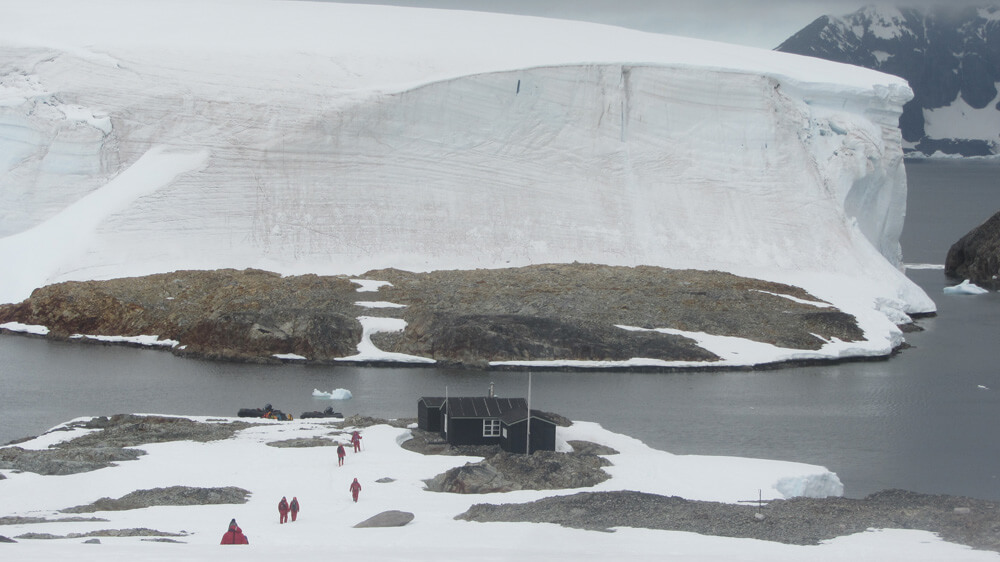
Named after Sir James Wordie, a member of the Imperial Trans-Antarctic Expedition that had visited this land in prior years, this Antarctic base is one of the earliest British scientific research bases in the world.
Stationed at Winter Island, this hut was built with materials from another station in Port Lockroy as well as with salvaged material from a whaling station on Deception Island.
The building served researchers well from 1947 to 1954, before another base was established and the scientists transferred locations.
Eventually, the five-person station was restored and declared a Historic Site, with items like rations, tools, typewriters and research equipment still on the grounds, creating an Antarctic time capsule.
8. Our Lady of the Rocks (Montenegro)
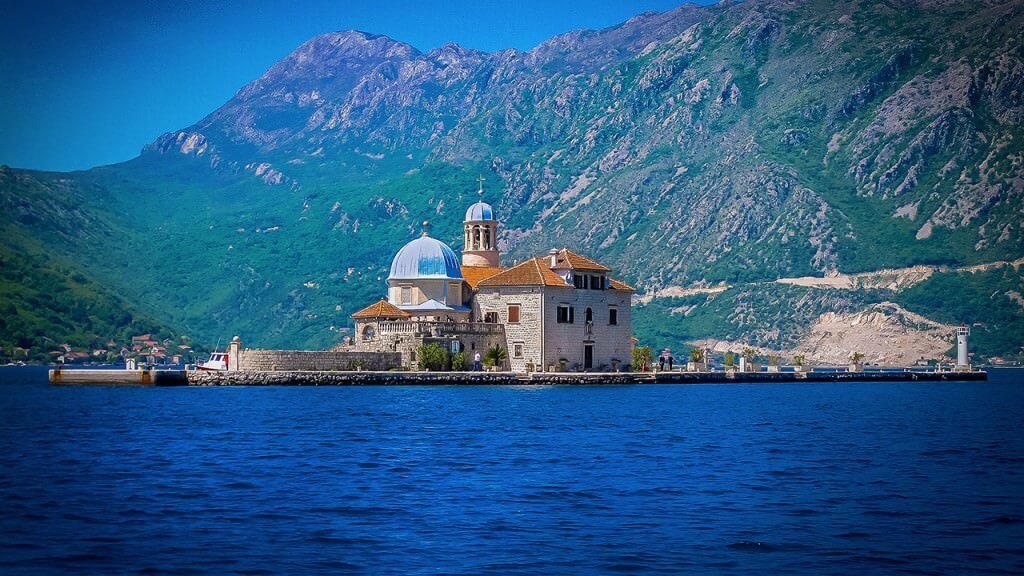
Legends tell of a rock in the Bay of Kotor, off the coast of Perast, Montenegro, that was discovered in the 15th century bearing a striking resemblance to the biblical icon of Mary and Jesus Christ.
As a tribute to the discovery, sailors supposedly started a tradition by which they would throw a rock into the sea after each voyage. Over time, this act is said to have birthed the artificial islet known as Our Lady of the Rocks.
Perched on this rocky base is the Roman Catholic Church of Our Lady of the Rocks. The church contains a wide collection of paintings, including 68 by famed 17th-century baroque artist, and Perast native, Tripo Kokolja.
9. Fogo Island Studios (Canada)
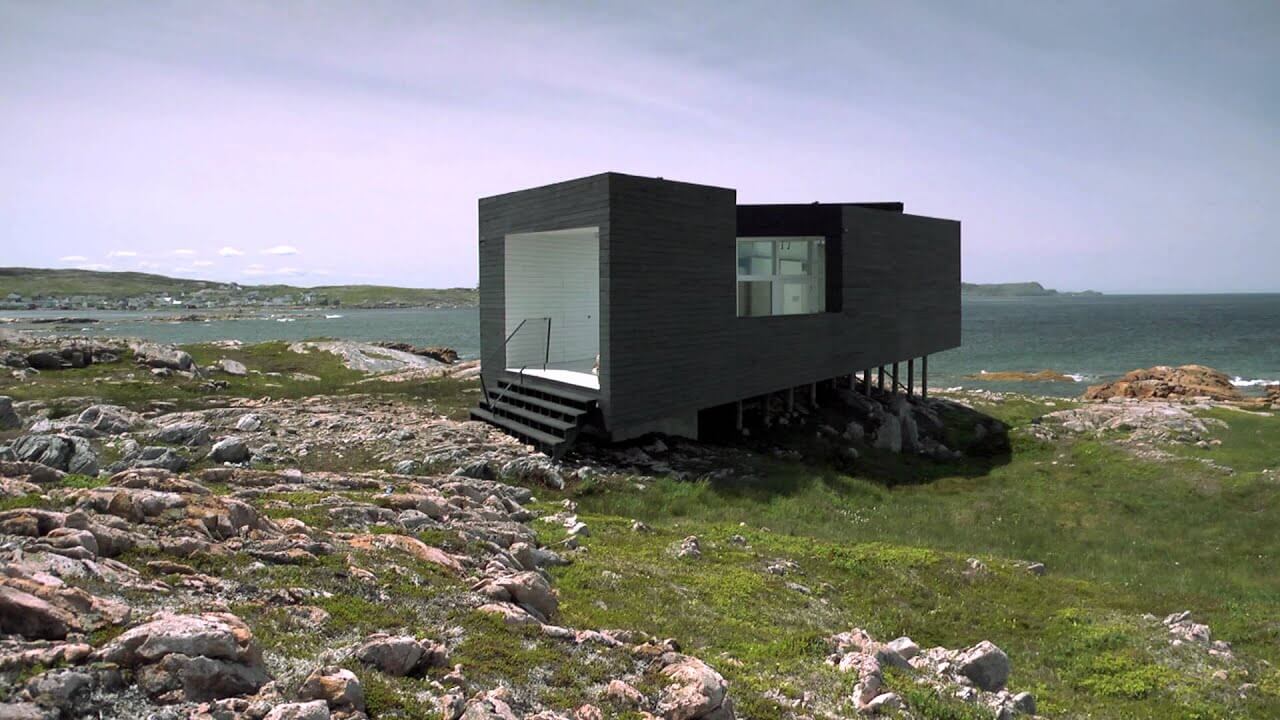
The culture and environment of Fogo Island are cherished among its inhabitants, with locals taking great pride, and effort, in preserving their way of life.
This Canadian region and its people aren’t particularly interested in congesting their naturally beautiful landscape and as such have chosen to spread some of their cultural pillars out across the land.
Few buildings are more sequestered than the Island’s art studios, which are spaced throughout the semi-desolate coastal community. The Squish Studio, Tower Studio, Bridge Studio, and Long Studio comprise the four locations designated to showing local art, but reaching them is no simple chore as each sits solemnly in their own slice of wildlife.
10. Mount Hua Chess Pavilion (China)
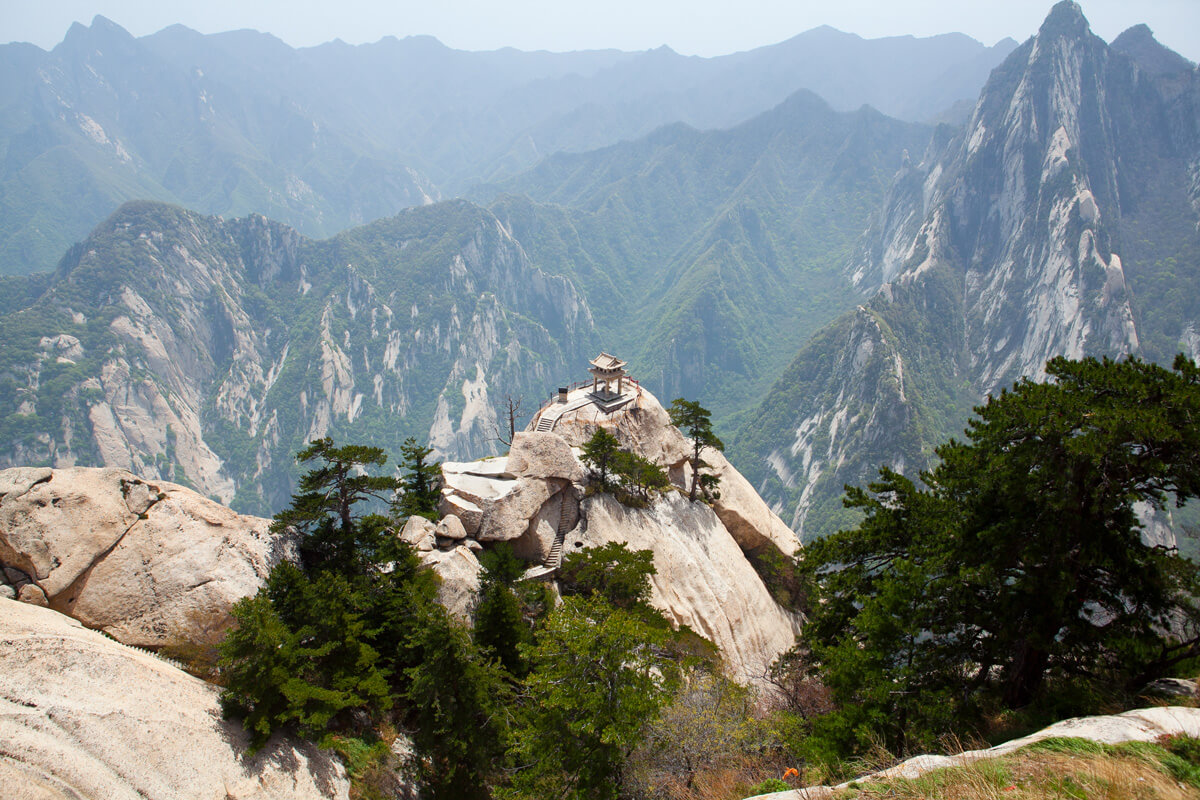
Ascending Mount Hua is a terrifying task as the hike up these Chinese summits has been ranked as one of the most dangerous in the world. One of the most iconic attractions among the peaks is the treacherous Plank Walk, where hikers must narrowly balance on a walkway made from thin planks lined against a flat side of the mountains between the North and South peaks.
But this route isn’t required to reach the most secluded place among the rocky pinnacles: the Chess Pavilion. Getting there still requires traversing a panic-inducing path which includes a 90-degree steep slope, but the payoff of experiencing this scenic landmark is well worth the risk.
11. Eremo di San Colombano (Italy)
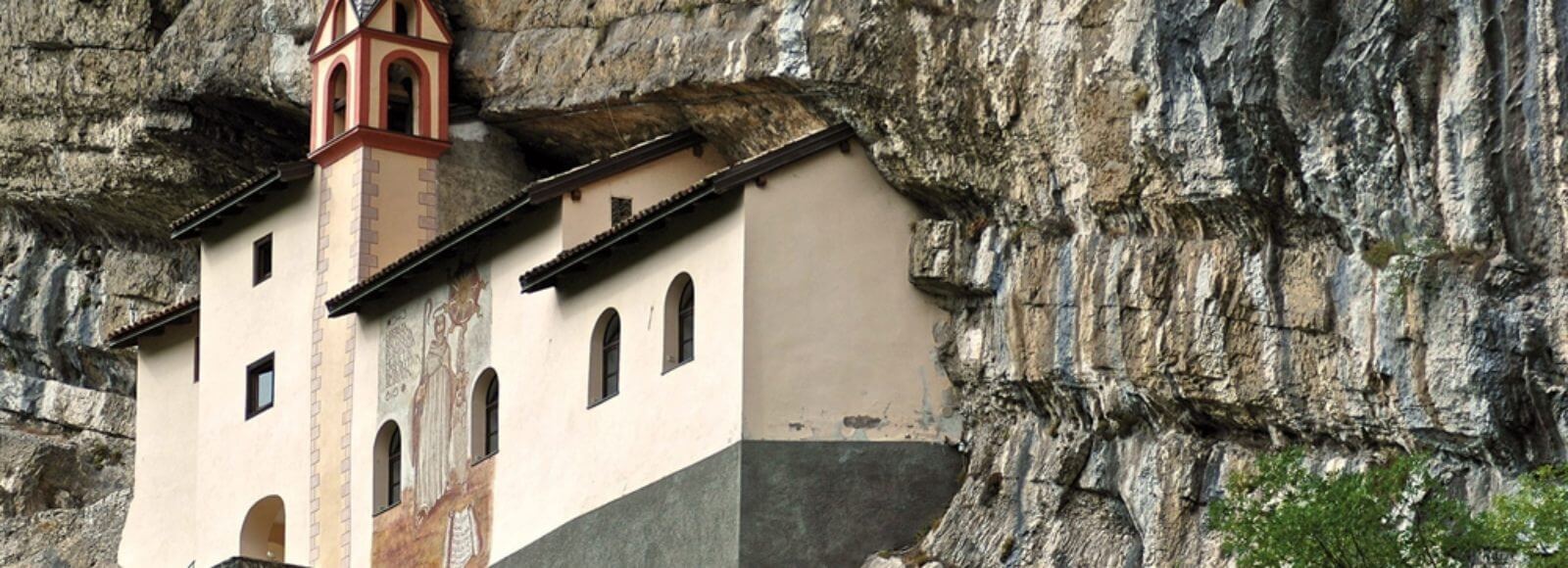
Nestled into a flat rocky mountainside in Trambileno, Italy, visiting this religious hermitage requires a two-hour hike through the Italian wilderness. Eremo di San Colombano was said to be founded by the saint of the same name as he arrived to the rockface to slay a dragon responsible for the passings of baptized children in the region, though this tall tale is thought to have arisen from a nearby monastery.
Natural caves above the building were used by secluded, devout monks as early as 753, with the first building coming to fruition two to three hundred years later. The current incarnation dates back to 1319, still preserved thanks to locals and a group of volunteers.
12. Paro Taktsang (Bhutan)
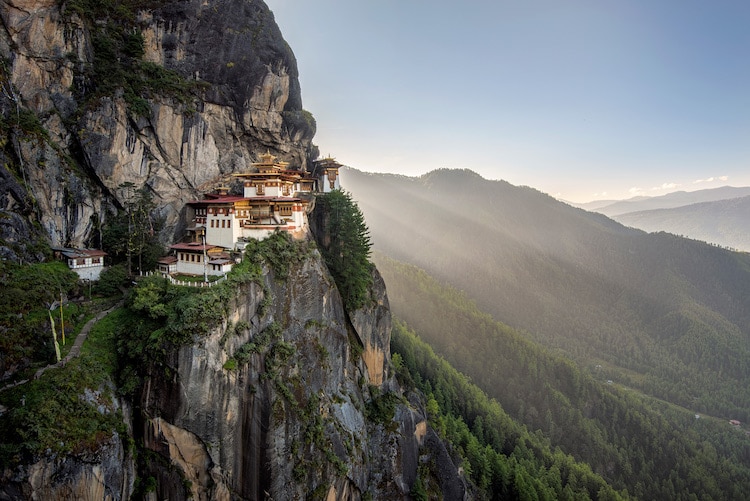
Also called the Tiger’s Nest, the sacred Buddhist temple complex in the Himalayas of Bhutan is known by locals as Paro Taktsang.
Legend holds that this “Tigress Lair”, the English translation for Taktsang, was a mythically consecrated site where the Buddhist master Guru Rinpoche tamed a tiger demon after riding it to the cliffside location.
The temple is stationed three thousand feet above the valley floor, and ten thousand feet above sea level. It’s a two-hour climb to reach the great monastery in a frightening experience as visitors must endure intimidating heights before entering the surreal, three-story structure.
13. Katskhi Pillar (Georgia)
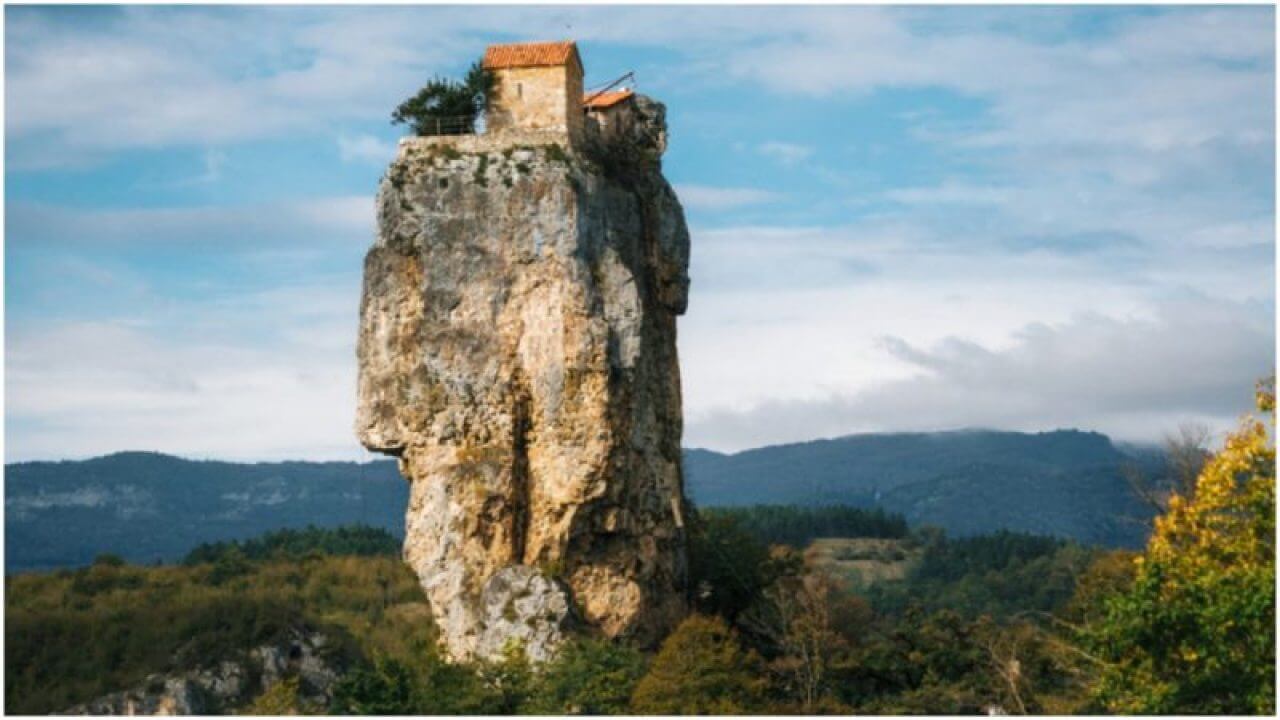
Rising 131 feet into the air in Central Georgia is the Katskhi Pillar, a singular, oblong rock-mound that looms above the surrounding forest. Atop this marvel is a holy landmark, including a church dedicated to Maximus the Confessor, a crypt, and a living quarters.
The pillar’s sole resident is a monk who has been living there for more than 20 years, climbing down the iron ladder once or twice a week to console devout followers that live in the chapel near the base of the pillar.
